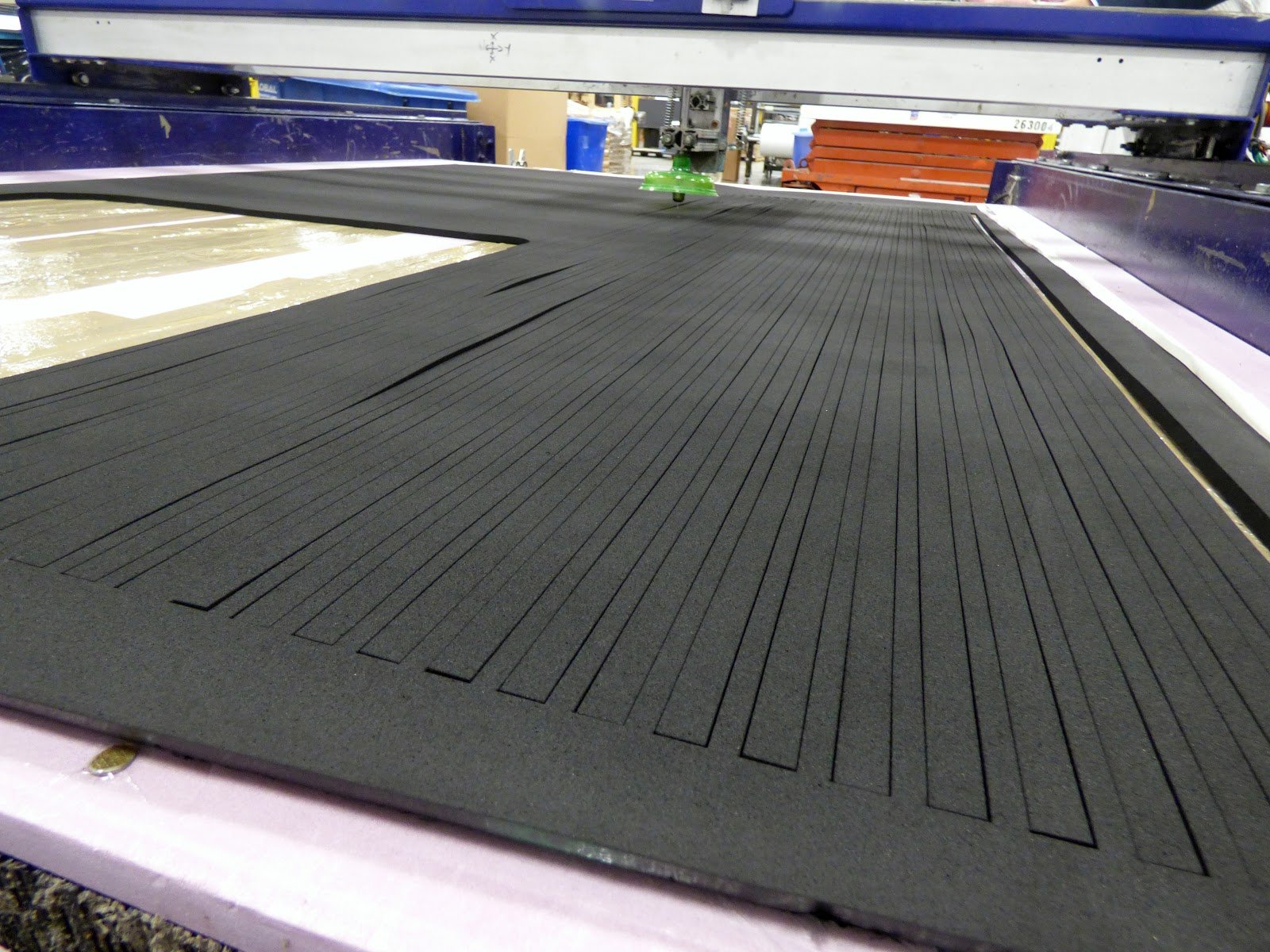Back To Blog
Shock absorption is a crucial factor in many industries, from automotive to medical devices. It helps protect sensitive components, improves user safety, and extends the lifespan of products. Choosing the right materials with proper shock-absorbing properties can prevent damage, reduce noise, and enhance performance. In this article, we’ll explore why shock absorption matters, how it works, and how Sur-Seal can help you find the best solutions for your needs. When equipment or products are exposed to sudden impacts, vibrations, or mechanical stress, shock absorption becomes essential. Without proper protection, these forces can lead to component failure, reduced performance, or even safety hazards. Materials like foams, dampeners, and specialized polymers are used to absorb and distribute energy, minimizing the risk of damage. This is especially important in industries where reliability and durability are key, such as automotive, electronics, and medical equipment. Closed-cell foam is ideal for high-impact applications due to its dense structure and resistance to compression. Its cells remain intact under pressure, allowing it to effectively absorb shocks. It’s commonly used in protective packaging, automotive parts, and industrial equipment that must withstand harsh conditions. Sur-Seal offers a range of closed-cell foam options tailored to different environments and applications. Open-cell foam provides greater flexibility and is often used in applications where sound absorption is needed. It's popular in HVAC systems, electronics, and consumer goods where minor vibrations need to be minimized without sacrificing comfort or usability. Sur-Seal’s open-cell foam solutions are designed to balance cushioning with breathability and adaptability. Custom dampening materials are an excellent choice for reducing vibrational wear on components over time. Sur-Seal provides tailored solutions using materials like polyurethane, rubber, and non-woven fabrics, ensuring optimal shock absorption for specific use cases. These materials are engineered to meet the unique demands of your project, whether it’s for industrial, medical, or consumer applications. Choosing the right cushioning material involves more than just picking a foam or polymer — it requires a deep understanding of the application environment, mechanical requirements, and compatibility with other components. Here are four critical questions engineers should ask when selecting a shock-absorbing solution: What frequency is causing the vibration or noise? Understanding the frequency of vibrations (low, medium, or high) helps determine which materials will be most effective at absorbing or damping them. Different materials respond differently to various frequencies, so matching the material to the problem is key to achieving optimal results. What’s the application? Are there any specific factors that need to be incorporated? The type of application — whether it's for automotive, medical, HVAC, or electronics — influences the choice of material. Factors like temperature, moisture, chemicals, and regulatory standards (such as UL) must be considered. For example, closed-cell foam is ideal for moisture-prone environments, while open-cell foam may be better suited for sound control in stable indoor settings. What materials will the solution bond with? It's important to ensure that the cushioning material adheres well to other components in the system. Some materials bond better with metals, plastics, or composites, so compatibility is essential for long-term durability and performance. What’s the primary issue we’re trying to solve? Clarifying the main goal — whether it's shock absorption, vibration dampening, or noise reduction — helps engineers choose the right solution. Understanding the problem upfront allows for a more targeted and effective approach, ensuring that the chosen material meets the specific needs of the application. These considerations help streamline the decision-making process and ensure that the selected cushioning solution performs reliably in real-world conditions. Sur-Seal’s Lunch-and-Learn sessions offer expert guidance and insights into choosing the best materials for your projects. Whether you're designing a medical device, automotive part, or electronic enclosure, Sur-Seal has the expertise and materials to support your shock absorption needs. From material selection to prototyping, their team provides comprehensive support to ensure your product is both durable and functional. Their custom solutions include sealing, nonwoven materials, and foam-based cushioning, all tailored to meet the unique demands of your application. Selecting the right material for shock absorption requires a detailed understanding of both the material properties and the application. Sur-Seal’s team of experts can guide you through the process, helping you find the perfect balance between durability, flexibility, and impact resistance. By working closely with their team, you can ensure that your design is optimized for performance and longevity. Incorporate shock-absorbing materials early in your design process to enhance product resilience and performance. Contact Sur-Seal today to discuss your needs and get a customized solution that meets your specifications. Take advantage of their Lunch-and-Learn sessions to gain deeper insights into the best materials for your application and improve your product designs with advanced cushioning technologies.  facial cleaner,face makeup remover,facial cleaning,wash face,Clean face Guangzhou Dingjin Flavors & Fragrances Co.,Ltd , https://www.dingjinflavors.comWhy Shock Absorption Is Important & How To Solve It

Why Shock Absorption Matters
Key Solutions for Effective Shock Absorption
1. Closed-Cell Foam for Strong Impact Resistance
2. Open-Cell Foam for Flexibility and Sound Damping
3. Custom Dampening Solutions
4 Key Questions Engineers Should Consider When Selecting a Cushioning Solution
How Sur-Seal Can Help
Choosing the Right Material With Sur-Seal’s Experts
Why Shock Absorption Is Important & How To Solve It
REQUEST A QUOTE
REQUEST A QUOTE